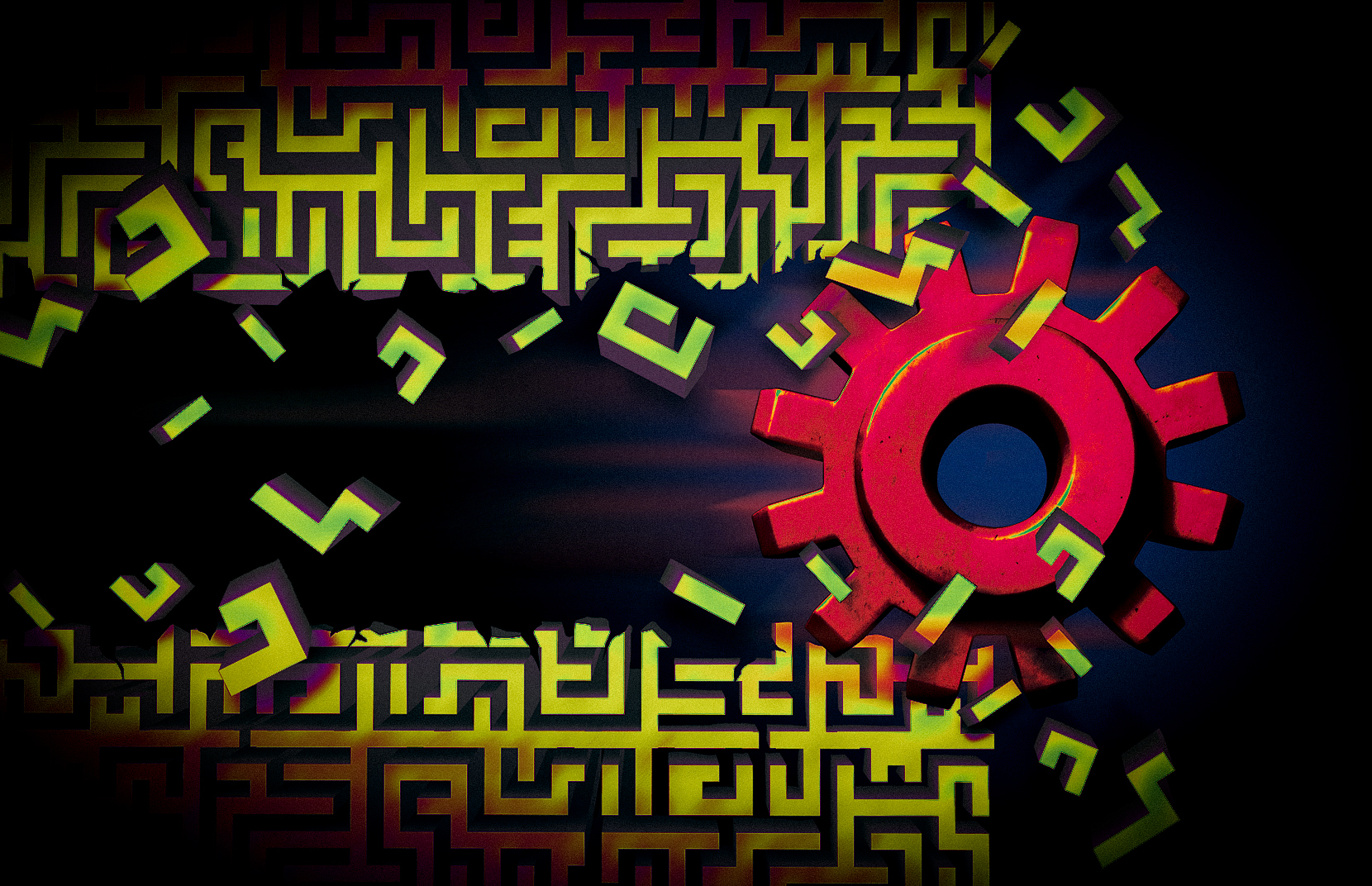Investors have long tried to classify companies based on industries and sectors, but the recent innovation cycle has led to the creation of new-economy companies that don’t easily fit into the standard frameworks.
“It’s a technology company. It’s an automaker. It’s a Tesla!”
Tesla has become a household name thanks to its innovative and expansive approach to automotive manufacturing, which aims to disrupt one of the biggest industries in the world. With its market cap zooming past $100 billion early this year, the electric-car maker has pioneered engineering and technology innovations in sustainability for more than a decade, spurring a global wave of new clean energy solutions. This has led to a quandary for investors: Should Tesla be classified as a tech company or as an automaker?
Tesla is not alone. Netflix, the top-performing S&P 500 stock for the past decade,1 with a recent market cap of about $150 billion, is largely perceived by the market as a technology company. However, its CEO, Reed Hastings, insists that Netflix is a media company because it spends the bulk of its money on content. For Hastings, the key metric for understanding the streaming service provider is total viewing time, not the total number of subscribers.2
Another top-performing company for the past decade, Domino’s Pizza, is considered by some to be a tech company that just happens to sell pizzas. Using everything from chatbots, voice recognition and delivery drones to, most recently, driverless vehicles, the world’s largest pizza maker has invested heavily in technology for several years.3 This could make Uber Eats, Grubhub, DoorDash, Seamless and other technology-enabled food-delivery platforms more relevant to Domino’s than other traditional pizza companies.
Classifying companies is going to get more confusing as technological innovations lead to the emergence of new business models, like those of Tesla, Netflix and Domino’s. Company classifications operate in a complex system — they are dynamic and temporal. A certain method of classification might work for one company but not another, and it may change over time. The more diverse a company grows, the higher the likelihood that it will operate in multiple sectors and industries at the same time. In the past decade, a company might have been characterized based upon the majority percentage of its revenues or the percentage of its operating income historically attributable to an old-line industry. However, if that company has a small, fast-growing division operating in a dynamic sector, it could trade with valuation multiples closer to those of the smaller, minority division.
The objective categorization of market companies into sectors, industries and clusters is important. Each company’s risk profile can be seen as driven by a combination of factors specific to the company — that is, specific or unsystematic risk — as well as by many business and economic factors that impact companies the same way (systematic risk). Having robust and unbiased classifications of companies can help investors compare businesses, aggregate company data to analyze whole industries or sectors and isolate sector or industry trends from broader market trends.
Investors, analysts, business leaders and even governments have long classified companies based on industries. In fact, many of our current economic measurements were born in the Industrial Age, when the companies that were growing and shaping the world were oil and gas giants, and health care and manufacturing concerns. These names are well known: ExxonMobil, BP and Royal Dutch Shell; Pfizer and Merck; General Electric and Toyota. Before the late 20th century, there were few tech companies, at least not as we currently define them.
Today, industry walls are disintegrating at a rapid pace. Over the past decade, Amazon, Apple and Google have made significant moves in traditional industries such as health care and autos. They have expanded far beyond the “information technology” tag originally attached to them. These companies, which are remarkable despite their relative youth, are all digital platform organizations that leverage a growing virtual network of suppliers and customers.
Technology is now a standard part of corporate infrastructure, like operations or marketing; in many cases, it is not an industry unto itself. Newcomers such as Airbnb, Lyft and Uber Technologies have sprung up to take advantage of fresh opportunities, combining technology with more traditional offerings to build platforms that leverage worldwide networks. These startups, backed by venture capital, rely on innovation and aggressive development. Their business models are highly creative: Rather than building and managing everything themselves, these companies leverage shared assets — cars, homes, skills and networks. When these startups go through the IPO process, or when giants like Amazon and Google enter completely different market segments, their shares have traded very differently from those of companies in the plain-vanilla industry categories assigned by traditional classification.
Classification Standards Used in Industry
Before we figure out how to categorize such stocks, let us briefly review the classification system that is currently in place and how it came to be. During the 19th century, the U.S. economy was driven by heavy industry, from railways and shipbuilding to steelmaking and mining. World War I added fuel to the heavy industry economic engine — and demand for its products — but by the 1930s service industries like banking, entertainment, insurance, real estate and transportation accounted for more than 50 percent of U.S. GDP.
In 1937, the U.S. created the Standard Industrial Classification (SIC) system to try to standardize the industry designations used by various government agencies to collect and share data. These four-digit codes categorized industries based on their business activities. However, as the economy evolved, the limitations of the SIC framework became clear. The classification was slow to detect emerging industries in technology and telecommunications or the increasing similarities among companies as a result of globalization and faster communication. As tech and telecom companies began their meteoric rise in the second half of the 20th century, the service economy continued to gather steam. By 1993, service industries represented three-quarters of U.S. GDP.
In 1999, Standard & Poor’s and Morgan Stanley Capital International (MSCI) introduced the Global Industry Classification Standard (GICS) to offer a single, robust, global sector and industry framework that would resolve many of the issues with the SIC system. Over the past two decades, GICS has been able to abate the effect of inaccurate and unclear categorization on everything from investment research to risk allocation.
Dow Jones & Co. and the Financial Times Stock Exchange (FTSE) launched the Industry Classification Benchmark (ICB) in 2005. ICB classifies more than 70,000 companies, compared with 43,000 covered by GICS. There is a difference in the classifications used by GICS and ICB: While GICS has a three-tier structure (sector > industry > subindustry), ICB has a four-tier structure made up of 11 industries, 20 supersectors, 45 sectors and 173 subsectors.
Thomson Reuters Business Classification (TRBC), a competitor to GICS and ICB, also classifies more than 70,000 companies. Developed by media and data giant Thomson Reuters in 2004, TRBC has a five-tier structure spanning ten economic sectors, 28 business sectors, 54 industry groups, 136 industries and 837 activities.
Although these three industry classification systems share some similarities, their differences may have an important effect on sector formation. For example, the airline industry is classified under transportation (second level) by GICS and TRBC but belongs to travel and leisure (second level) under ICB. TRBC classifies airlines with ground and sea transportation companies; GICS groups airlines with subindustries like marine, rail transportation infrastructure, freight and logistics; and ICB categorizes airlines with hotels, restaurants, casinos and recreational services. These distinctions may seem subtle, but they can be material when taken in the context of industry-neutral portfolios. The differences also materialize during any valuation exercise in which stocks are measured against comparable companies from the same industry. For the purpose of this article, we will restrict our further review to the GICS classification because it is by far the most prevalent and accepted standard in the industry.
De Facto Framework
GICS has become the de facto framework for investment classification thanks to its universal application to both developed and developing economies, its accurate subindustry representation and its flexibility, which allows it to stay current with the market.4 The GICS framework constitutes a far more granular hierarchy than its predecessors, comprising 11 sectors, 68 industries (spread across 24 industry groups) and 157 subindustries. Though the methodology is still very industry-centric, the sectors now reflect the modern economy: communication services, consumer discretionary, consumer staples, energy, financials, health care, industrials, information technology, materials, real estate and utilities. Industries are categorized either by what they produce or by who buys their products and services. Accommodating the shift to the service economy, GICS sectors are oriented more toward markets than to production. Instead of categorizing companies as consumer goods or consumer services, GICS divides the consumer economy into consumer discretionary and consumer staples. In such a classification, each sector can accommodate goods and services but investors can still differentiate based on companies’ expected responses to changes in business cycles.
The GICS classification for each company is an eight-digit code comprising two digits for each of the four levels: sector (for example, 25), industry group (2520), industry (252010) and subindustry (25201040). A company is assigned to a single GICS subindustry based on its primary business activity, measured chiefly by revenue but also taking into account the earnings analysis and market perception. The subindustry classification then dictates the industry, industry group and sector.
Companies with more than one significant business are assigned to the subindustry that generates most of their revenue and profits or best reflects their principal business. Companies participating in different sectors are classified as industrial conglomerates or multisector holdings. Subsidiaries that file separate financials are treated as separate entities. This methodology provides the transparency and accuracy needed for the 21st-century economy, and the four classification levels allow for accuracy and customization in structuring a portfolio strategy.
Passive investment products like exchange-traded funds (ETFs) and baskets use GICS as the basis of the market spaces they are targeting. Investors track emerging markets and identify niches by monitoring GICS categories.
The Impact of Innovation
Though GICS has served the investment industry over the past two decades, the more recent innovation cycle has led to the formation of a new breed of platform-based companies that are harder to fit into its subindustry mandate. Economists may debate whether long-term cycles exist in the modern world, but there is consensus around the fact that technological innovation breeds new industries, which then usurp older ones.5
What is innovation? In statistical signal processing, innovation is the difference between the observed value of a variable at a particular time and the optimal forecast of that value based on the information previously available. In the business world, innovation refers to the development of services and products that address market needs that were formerly nonexistent. Examples include a new technical device, a novel business model or a financial instrument that allows higher efficiency and better utilization of resources.
Technological innovation is critical to the long-term economic development of modern industrial societies. The innovation starts with idea development and ends with the commercialization of a viable product or service addressing a proven market need, such as connectivity and global communications.
The internet as we know it started to take shape in the early 1990s with the invention of the World Wide Web by British computer scientist Tim Berners-Lee.6 Today, we have an astronomical number of internet-enabled devices, communicating and connecting with one another in new and different ways; myriad web applications that keep on growing in number; and new business models all based on the web. To understand the impact of technological innovations like the internet, it’s helpful to go back nearly a century to the work of two European economists.
In modern history, economic development has often been driven by major disruptive inventions that very quickly did away with existing practices, setting the pace of progress within society. In the mid-1920s, Russian economist Nikolai Kondratiev proposed the theory that global development happens in long-term cycles of about 50 years, in which periods of economic growth are followed by periods of depression, and that these cycles can be represented as sinusoidal curves (now called Kondratiev waves).
Austrian economist Joseph Schumpeter saw a coincidence between the periods of greatest economic growth and those of the greatest technological development. In The Theory of Economic Development, first published in 1911, Schumpeter described how innovation leads to new businesses and wrote that “booms and recessions are, in fact, inevitable and cannot be removed or corrected without thwarting the creation of new wealth through innovation.”7 Today, for example, all businesses have had to adapt to the internet in one way or another.
Technological revolutions happen in cyclical waves and bring about a social and economic paradigm shift. The Information Age, in which we are currently living, began in November 1971 with the creation of the first microprocessor, the Intel 4004 chip, which had 2,300 transistors and could perform 60,000 operations per second. Intel Corp. was co-founded by Gordon Moore, known best for his famous Moore’s law, which states that the number of transistors that can fit on a microprocessor doubles roughly every two years. (Today, Intel’s top-of-the-line Core i9 microprocessor has 3 billion transistors and can perform 5 billion operations per second.)
According to Slovakian economist Daniel Smihula, there have been five technological waves since 1600, each of which was characterized by a revolution. The theory is based on the idea that the main technological innovations are introduced to society not continuously but in specific waves, with shortening time spans as a result of technological progress. Each long wave of technological innovations with economic implications can be decomposed into an innovation phase, an application phase and a saturation or stagnation phase.8
The time with the highest concentration of technological innovations is the innovation phase. This is the period of economic revival after the stagnation and crisis from the end of the previous wave. The next phase is where applications tend to catch up with innovations, allowing innovations to come into practical deployment. This is when resource utilization and production are maximized. The application phase is the period of solid economic growth when new business models, such as the sharing economy, come into the spotlight and new sectors form.9,10 This is the phase when industry classification frameworks need to be updated.
Hierarchical Limitations
The hierarchical structure of the standard classification does not lend itself to the new industry structure spawned by the latest innovations. The hierarchical structure allocates each company to one subindustry and does not allow any intersection or soft boundaries. As a result, companies may be mislabeled permanently or temporarily. In some cases, a company’s entire business model may strongly link to an industry that is different from the one in which it is classified.
There are myriad examples. Amazon started as an online bookseller and evolved into an electronic retail marketplace, then a cloud computing provider (with Amazon Web Services accounting for a major portion of the company’s net income and valuation); today, it is making a foray into health care. Google parent Alphabet built its business around search and advertising but now dabbles in everything from mobile software platforms, hardware and payments to the frontiers of machine learning. Facebook has expanded beyond its social network roots and is involved in digital currency as well as hardware. Netflix began as a mail-order DVD company and is now one of the foremost players in streaming and content.
Sharing-economy companies like Airbnb, Fiverr, Lyft, TaskRabbit, Uber and WeWork have very different business models and are valued based on their platforms and network effect.11 Peer-to-peer lending firms SoFi and Prosper and crowdfunding enablers like Kickstarter have disruptive business models in the fintech space. Tesla’s electric cars and battery technology provide a viable alternative to internal combustion engine vehicles and are affecting the energy and traditional auto industries. And Nvidia Corp. changed the game in computing hardware with its graphics-processing units and their ubiquitous application in cryptocurrency mining and deep learning frameworks.
The likelihood that the aforementioned new-economy companies will upend their traditional counterparts has not been lost on MSCI and S&P, which in September 2018 undertook their largest-ever reorganization of GICS. The main GICS changes affected the following sectors:
- Telecommunication services was broadened and renamed communication services.
- Media companies moved from consumer discretionary to communication services.
- Internet services companies moved from information technology to communication services.
- E-commerce companies moved from information technology to consumer discretionary.
Many high-growth companies, including Alphabet, Facebook and Netflix, were reclassified from the technology sector, which had served as a catch-all for such names; Alphabet, Facebook, PayPal and Twitter were moved to an expanded “communications services” group. Netflix was moved to this group from the consumer discretionary sector, but Amazon stayed in the consumer discretionary sector.
The September 2018 reclassification affected about 10 percent of the total market cap of the S&P 500 and forced changes in how investors pick stocks and allocate capital among ETFs tracking the tech sector, which dropped from 26 percent of the index to 21 percent and from trading at 19 times expected earnings to 18 times. Meanwhile, the telecom sector increased from 1.9 percent of the index to 10.2 percent and consumer discretionary decreased from 13 percent to 11 percent.12
Conclusion
Investors, analysts and others have long classified companies based on industries and sectors. Although GICS and other classification systems served well in the past, the most recent innovation cycle has led to the creation of new-economy companies that don’t easily fit into their frameworks. The 2018 changes to GICS addressed some of the classification challenges, but more needs to be done.
One frequent approach is to use correlations, principal components or other clustering methodologies that take market-based inputs such as prices, fundamentals or other proxies of market perception.13 Companies whose stocks have similar return drivers are likely to have related risk factors. Therefore, such classification is more likely to be based on how a company’s equity trades (for public companies) or how a company’s equity is valued (for private companies).
Another approach is to look at how a company is mentioned by other companies in the “Competitors” section of its 10-K and 10-Q reports, and then clustering based on these mentions. Interestingly, among companies that are cited as competitors in financial statements globally, Google is named most often, followed closely by Amazon. There is ongoing research suggesting that such citations may be a risk factor and relevant to classification.14
Michael Kozlov is a Senior Executive Research Director at WorldQuant and has a PhD in theoretical particle physics from Tel Aviv University.
Ashish Kulkarni is a Vice President, Research, at WorldQuant and has a master’s in information systems from MIT and an MS in molecular dynamics from Penn State University.
Xin Li is a Vice President, Research, at WorldQuant and has a master’s in computer science from Tsinghua University.
Sopio Bitsadze is an Intern at WorldQuant as part of the IFC–Milken Institute Capital Markets Program and has a master’s in economics from Tbilisi State University.




